The so-called "Durchsicht" forms the university’s central public outdoor space. From here interested members of the public can access the street courtyard of the workshop and teaching building. The two-storey theatre and experimental studio is prominently oriented towards the "Durchsicht". The idea of the classic proscenium theatre is questioned, the scenic space is extended outwards, immersive However, the most important place where the public is engaged is located to the west of the "Durchsicht". This is where the "head or end building" of the
Hessen State University of Art and Design, Offenbach
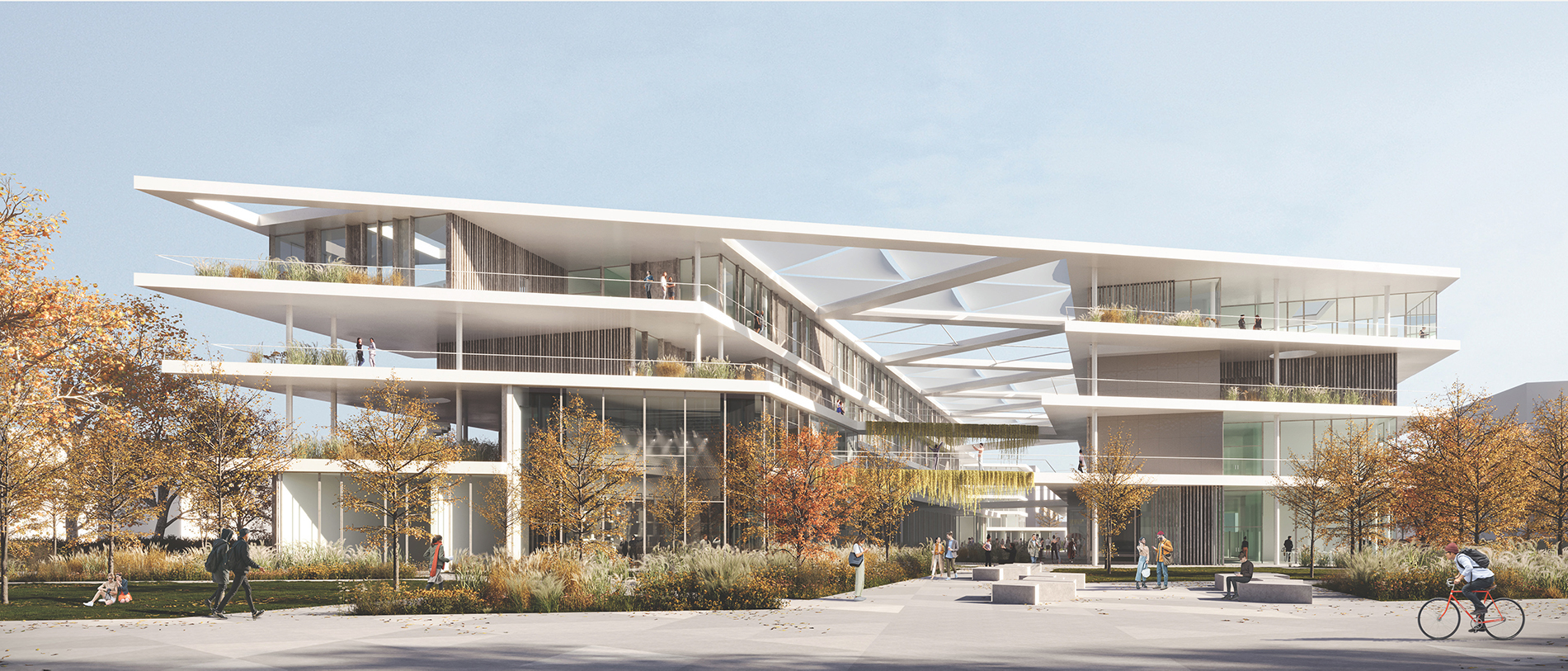
Following the transition from a Werkkunstschule (applied arts college) to a Kunsthochschule (university of art) , the HfG is now entering a new phase: NEUBAUNOW at Offenbach Harbour! Appropriation of the "extended field" of the building site and opening up to the city and the harbour! The concept envisages the free use and appropriation of "robust slabs".
Year
2022
Venue
Offenbach
State
Competition
Category
Education
Size
28.854 m²
Year |
Venue |
State |
Category |
Size |
|---|---|---|---|---|
2022 |
Offenbach |
Competition |
Education |
28.854 m² |
Year
2022
Venue
Offenbach
State
Competition
Category
Education
Size
28.854 m²
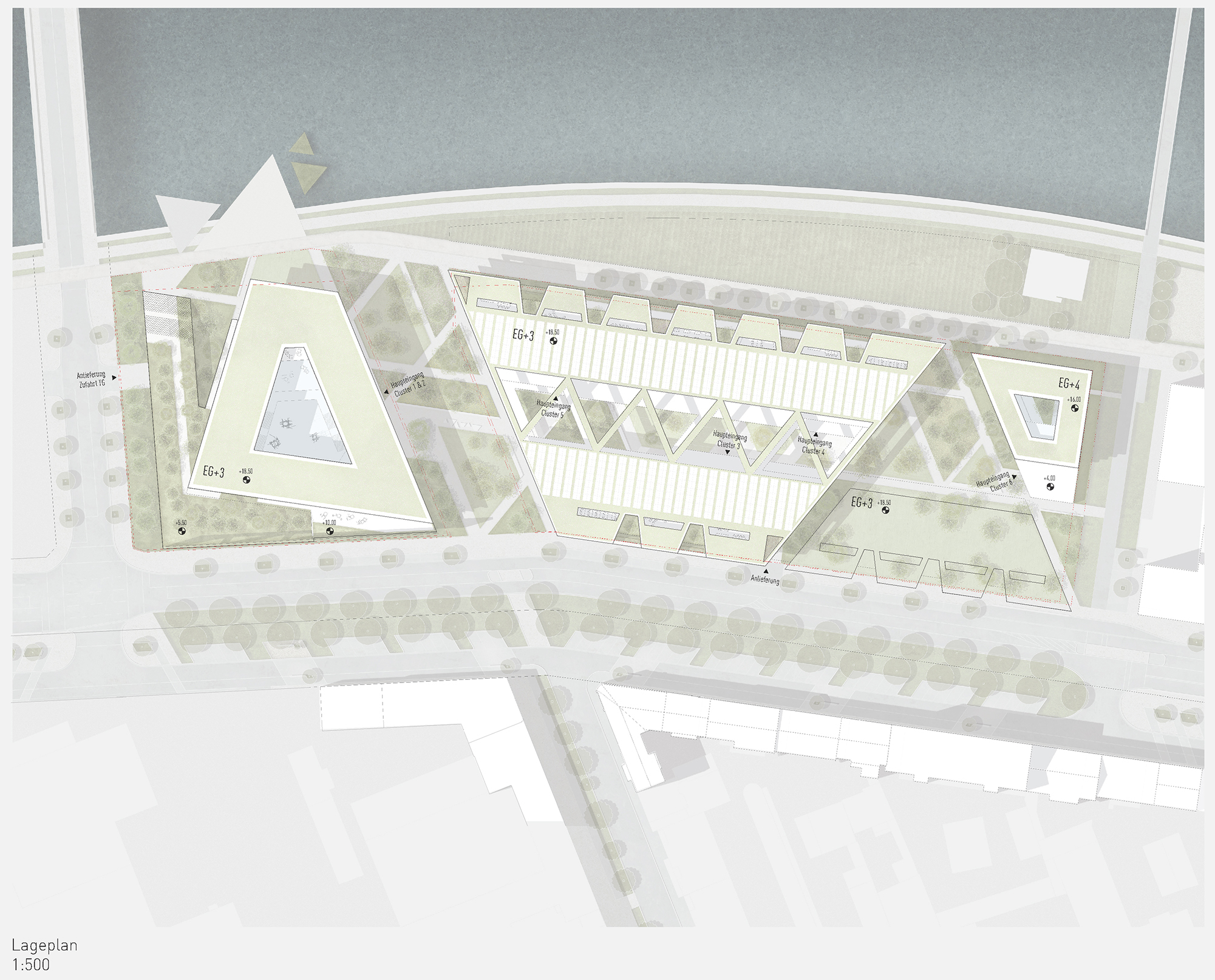
The centerpiece is the workshop and teaching building
consisting of clusters 3, 4 and 5. It is made up of two wings, one along Hafenallee, the other on Hafengarten. They are consciously conceived as serial, i.e., flexible and changeable, and they emanate the character of a laboratory that was called for. Together, however, the two wings form a courtyard, an internal street space which is covered by triangulated structures to provide shade and protection from rain. The wings are connected by several bridges that cross this space. This flexibly covered street cum courtyard is what shapes the school’s identity and it becomes a space for action. Workshops and studios open directly onto this courtyard or are connected via the spacious main entrances.
In front of all the workshops and workrooms on the upper floors there are especially wide outdoor spaces in the form of terraces. They project into the street-courtyard, activating it in a three-dimensional way.
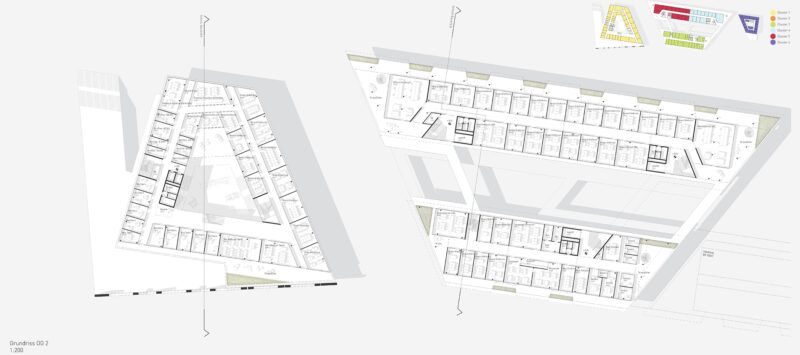
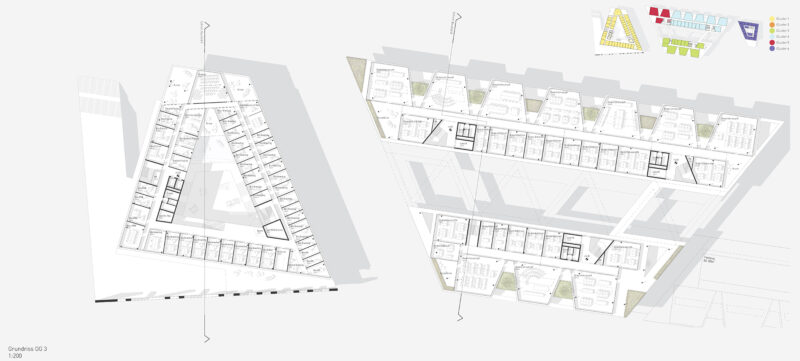
The top floor can be aptly described as special. It contains all the large teaching spaces, which, thanks to their trapezoidal floor plan, receive daylight from three sides. They project slightly into the street space of Hafenallee and in the direction of Hafengarten, giving the building a striking appearance. As a result it can be read as an "art and culture machine" which nevertheless has a certain small scale quality and is
adapted to the grain of the surroundings. The large teaching spaces can be divided to create two medium-sized ones. The workrooms, which are organised in a row opposite, can be combined in pairs, each forming a central teaching space. The interplay creates standardised room structures that can be used and assigned flexibly. This applies to the entire building: it can be transformed and adapted.
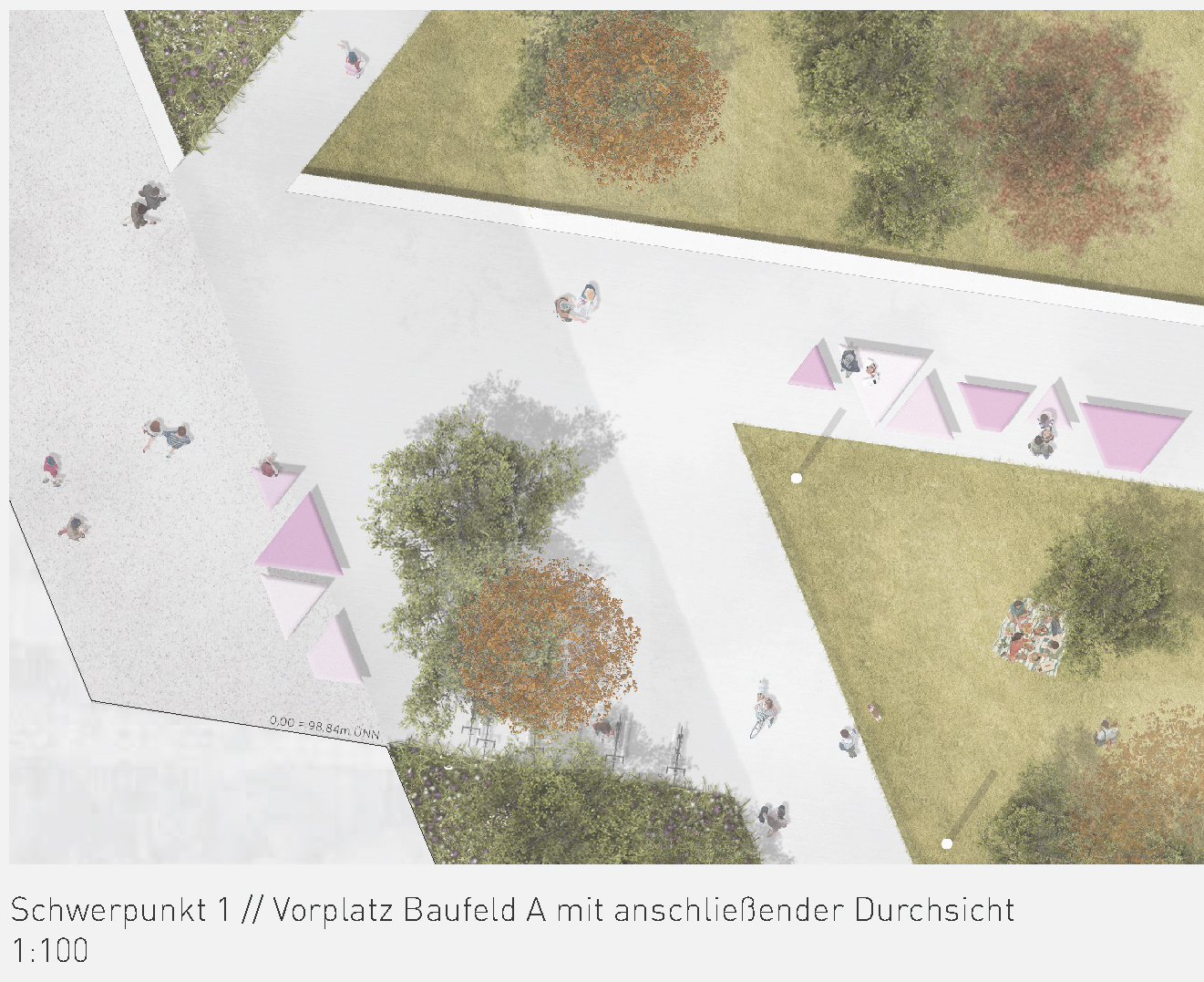
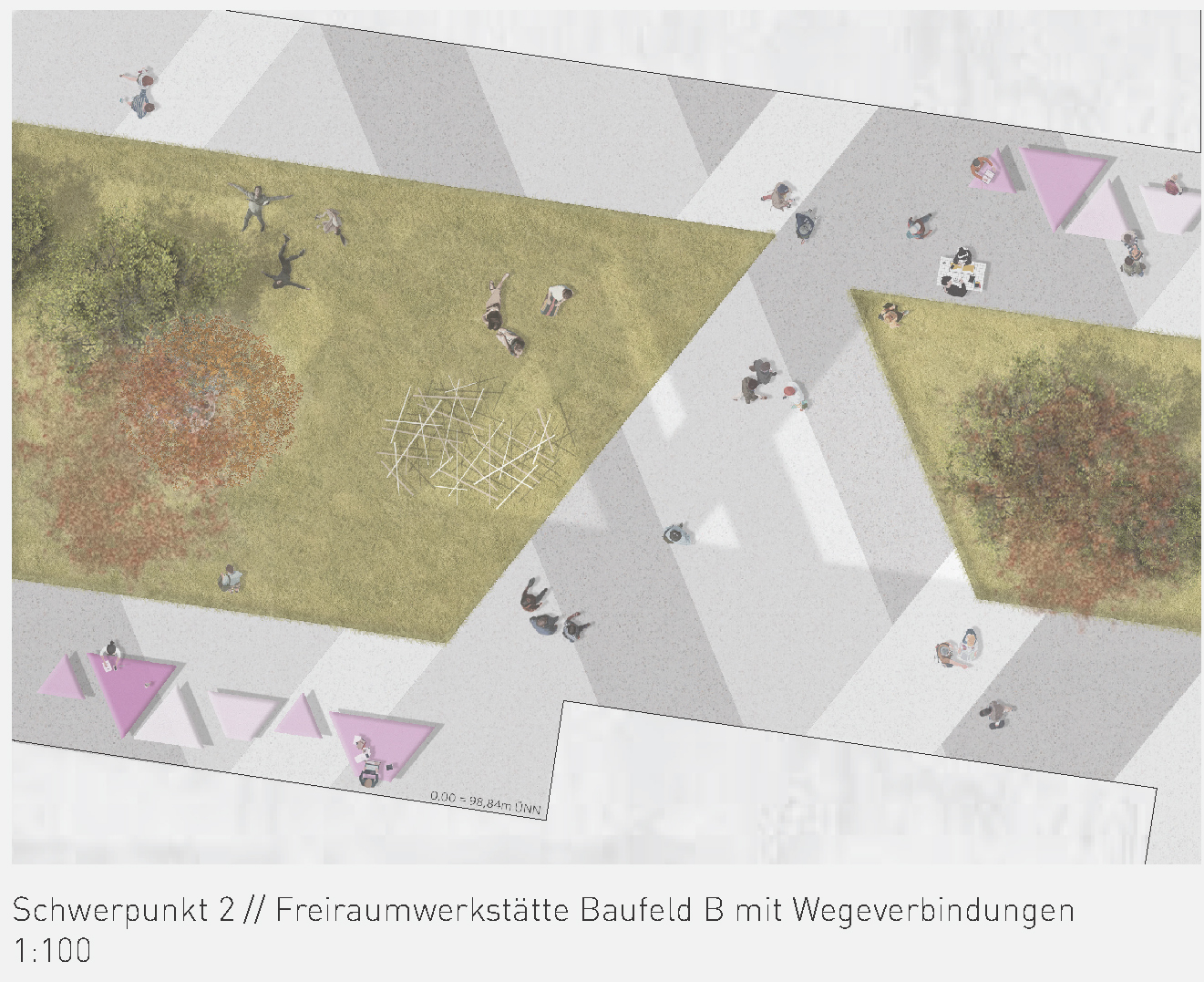
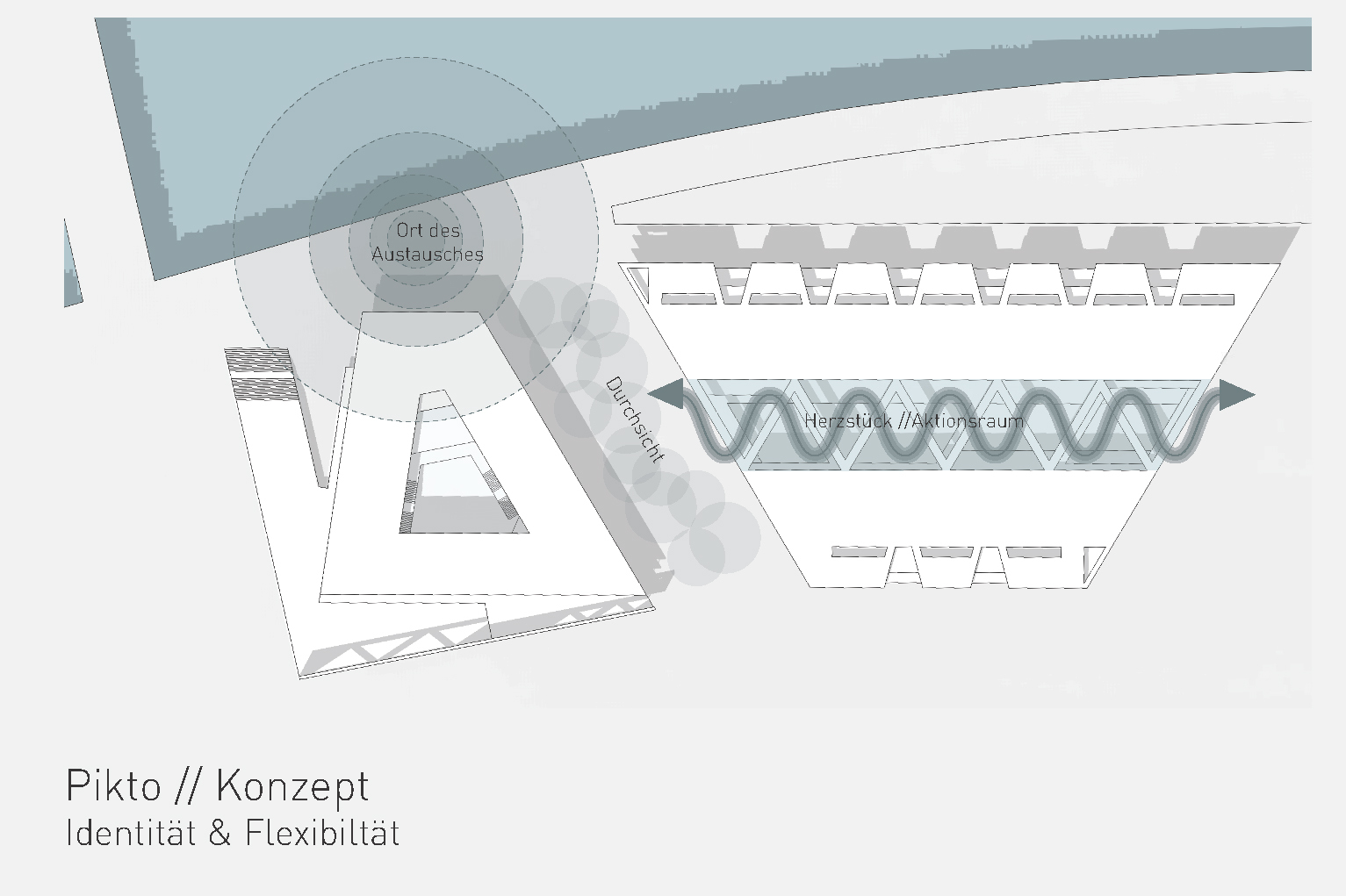
university stands, with clusters 1 and 2. Like the “building for physical work” i.e. the workshop and teaching building, this building is also triangular in plan, but it is less generic than the former and more playful, since on the one hand it has to react to the urban situation of the bend made by Hafenallee and the direction of the Walter Spiller Bridge, while on the other hand it is intended that it should still be perceived as part of the overall complex in harmony with its main orientation.
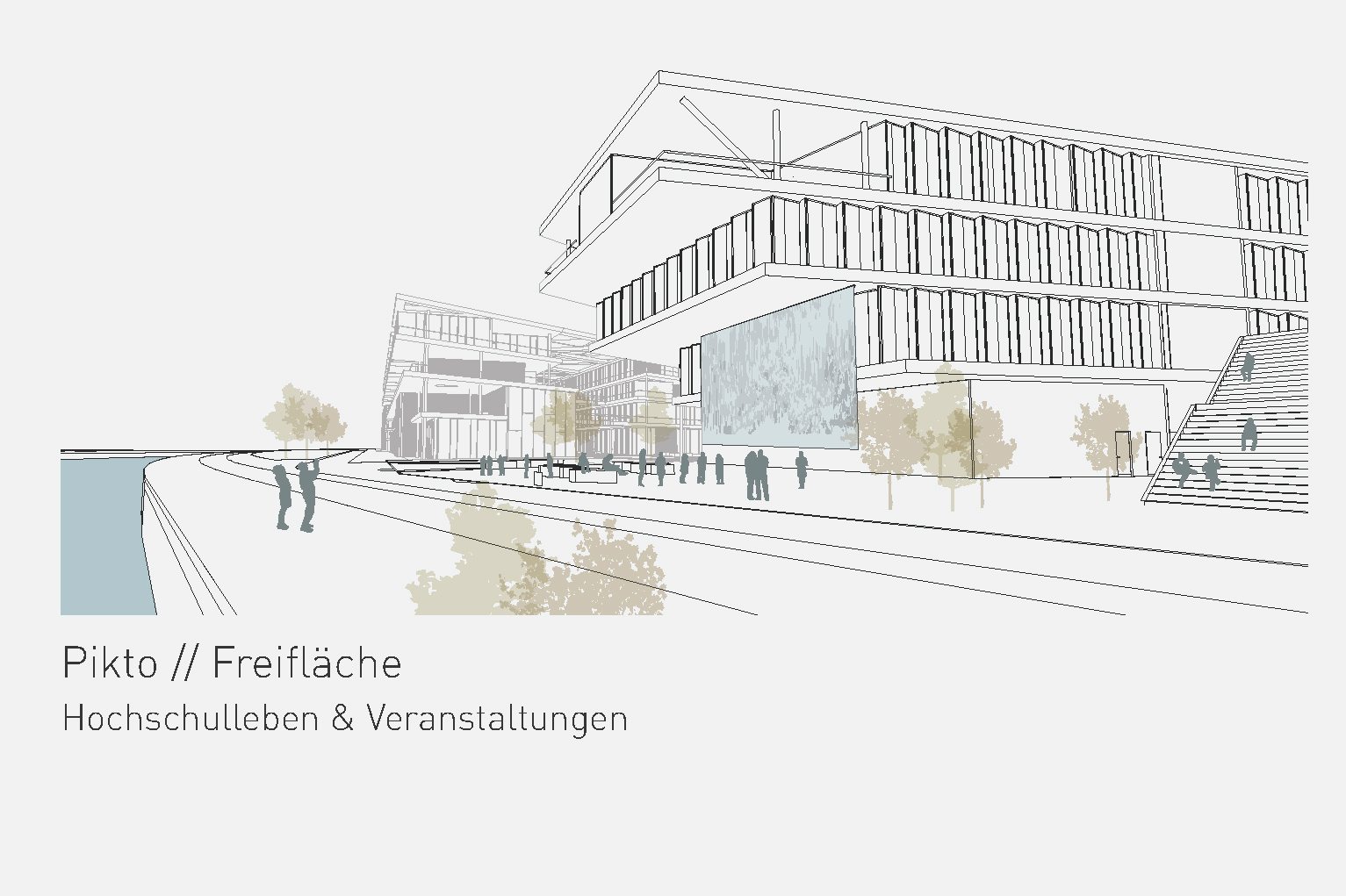




The foyer, auditorium and large lecture hall, main exhibition space and the refectory are arranged around the atrium.
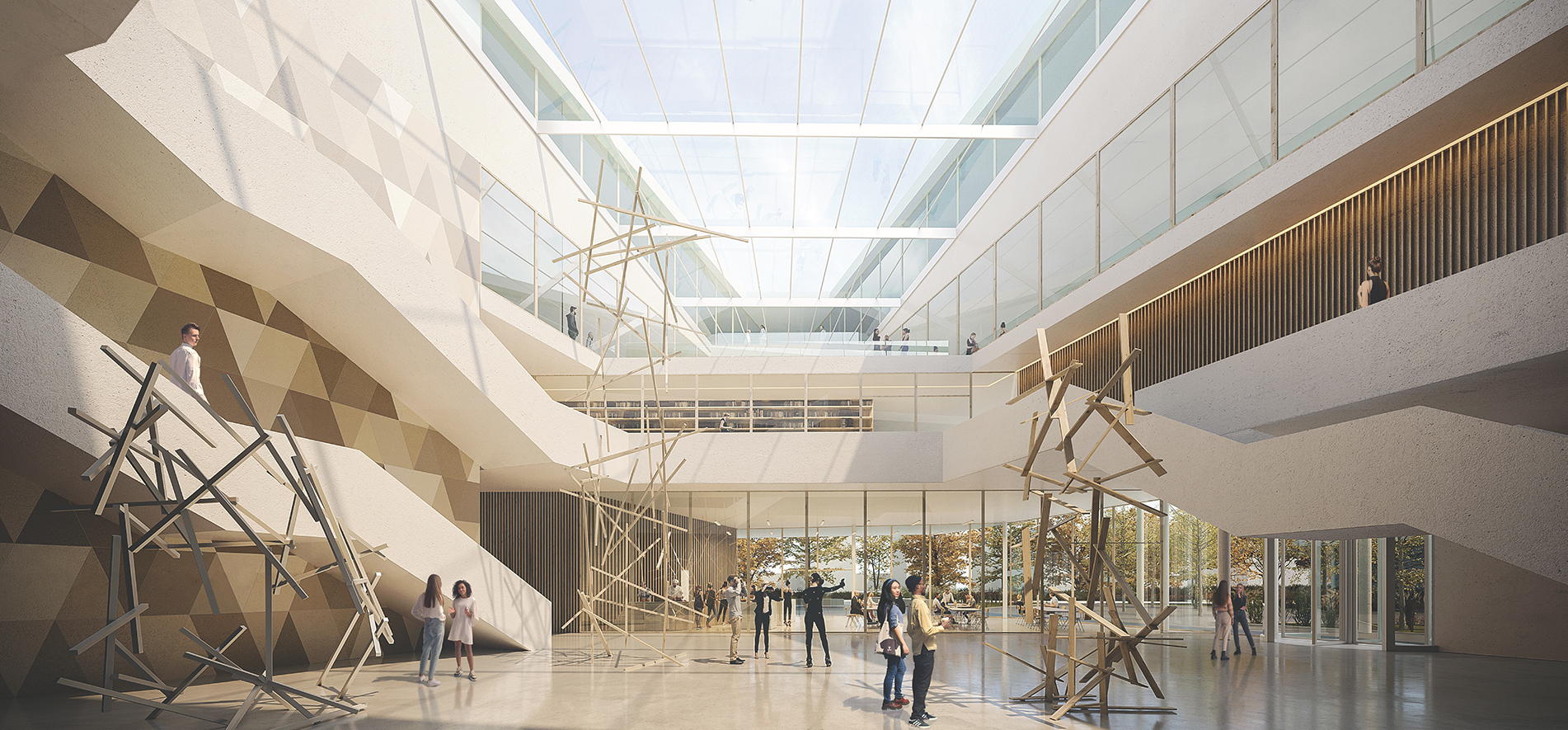
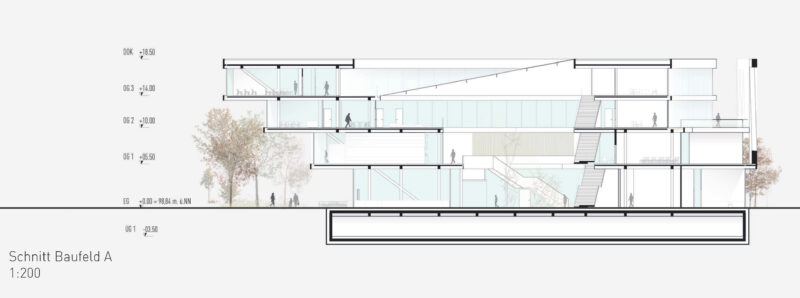
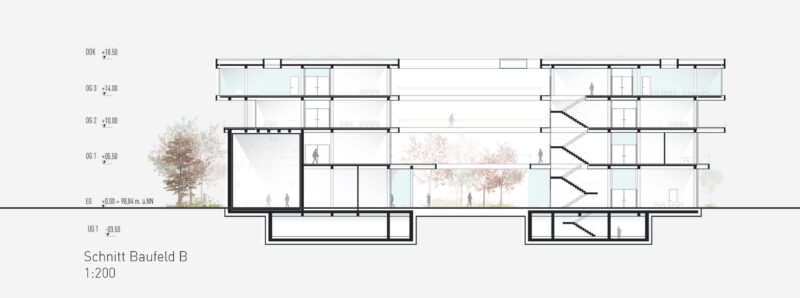
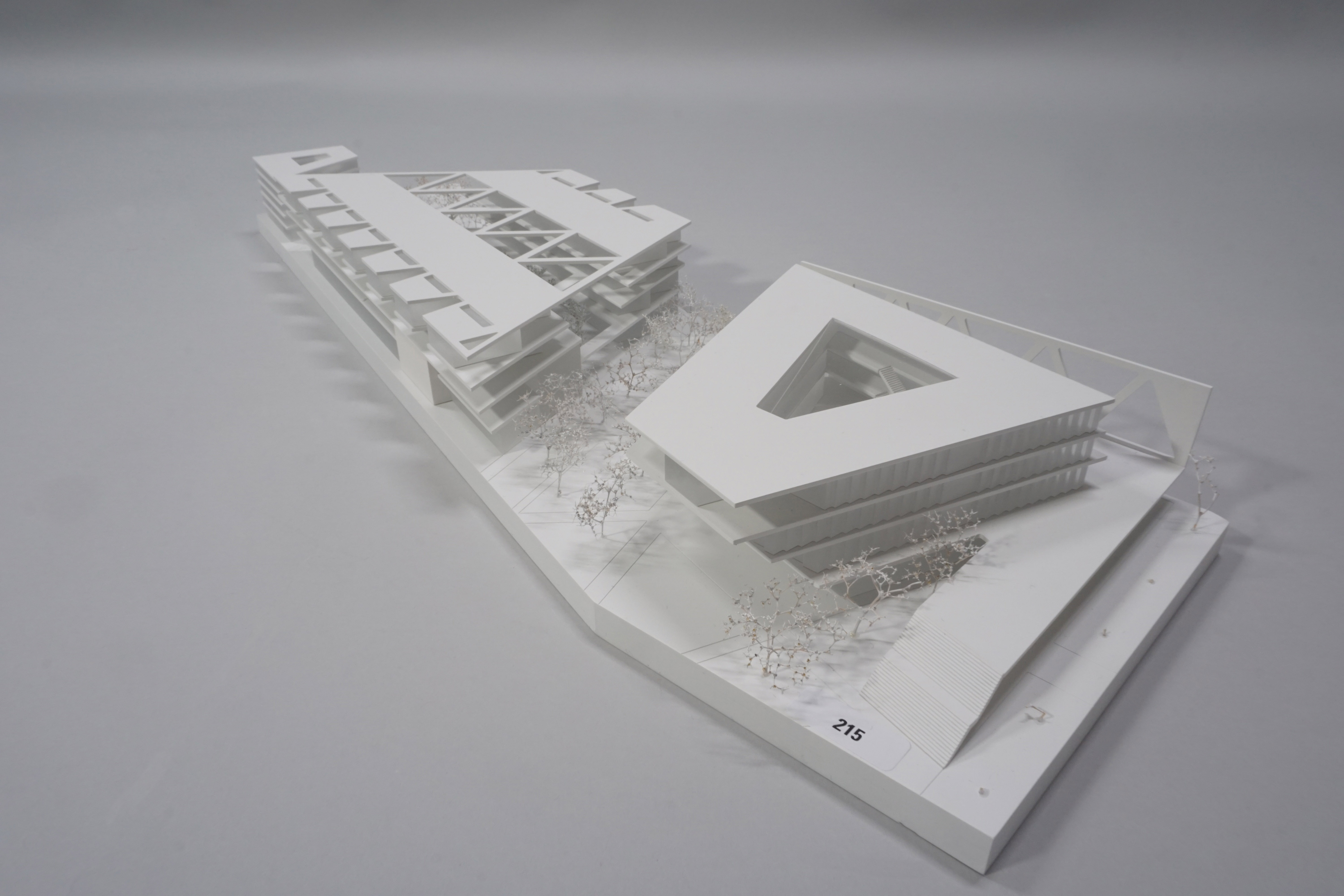
Architecture
Pichler & Traupmann Architects
Design team
Bartosz Lewandowski (Team leader)
Anna Chakhal-Salakhova
Leonie Eitzenberger
Elisa Mazagg
Client
Land Hessen, GE
Structural fire protection
IBS – Institut für Brandschutztechnik u. Sicherheitsforschung GmbH, Linz
Sustainability concept
Architect Bernhard Sommer, Vienna
Construction costs
FCP – Fritsch, Chiari & Partner ZT GmbH, Vienna
Landscape planning
Lindle+Bukor – atelier für landschaft, Vienna
Hard facts
Start of planning: 2022
Usable floor area: 15.488 m²
Gross floor area: 28.854 m²
Location: Offenbach, GE
Function: University
Scope: Not open, single-stage competition
Renderings
thedigitalbunch.com, PL
Model
Béla Berec Architektur-Modellbau-Gestaltung, Stuttgart